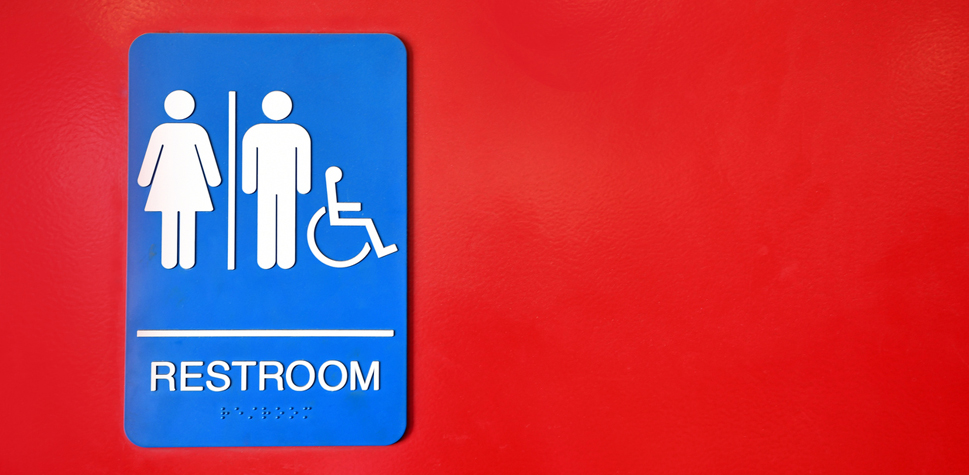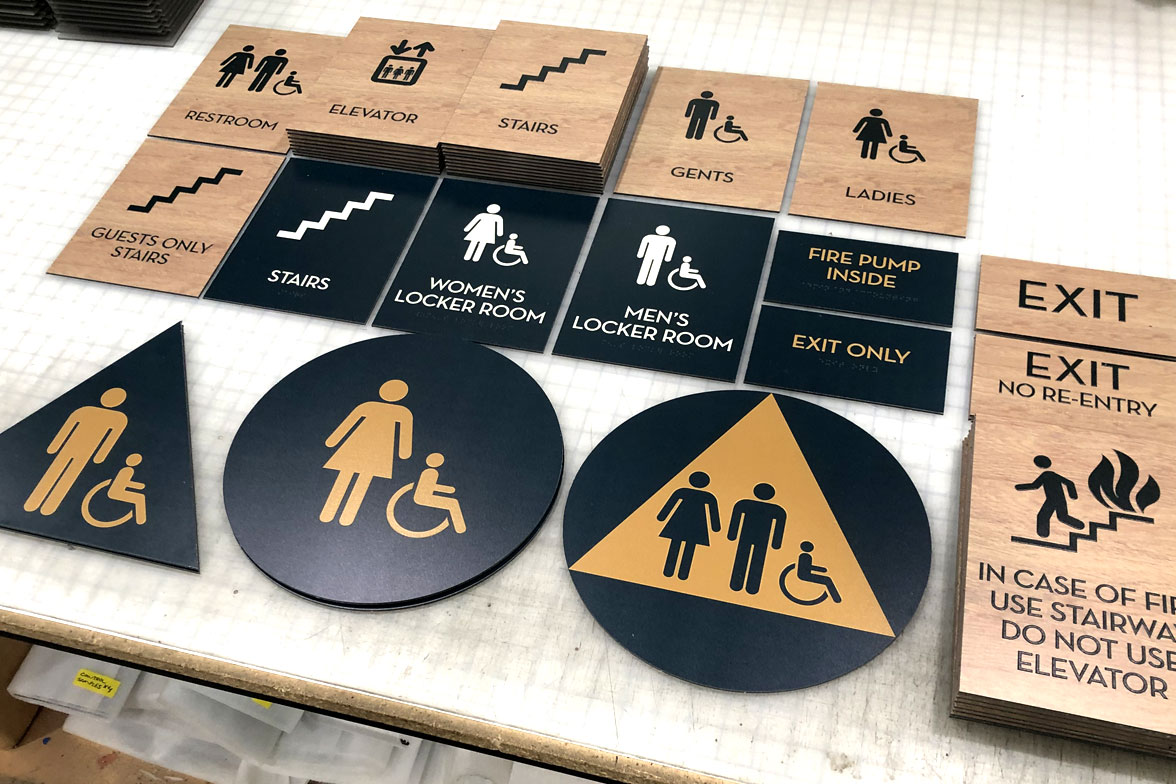How ADA Signs Enhance Accessibility for Everyone
How ADA Signs Enhance Accessibility for Everyone
Blog Article
ADA Signs: Ensuring Availability and Compliance in Public Spaces
ADA signs plays an essential duty in ensuring accessibility and compliance within public areas, substantially adding to a comprehensive environment for individuals with specials needs. As we explore the subtleties of ADA signs, from tactile features to create intricacies, it's vital to consider exactly how these elements integrate to promote the legal rights of all customers.
Significance of ADA Signs
In contemporary society, the relevance of ADA signs prolongs beyond plain conformity with legal mandates to personify a commitment to inclusivity and ease of access for all individuals. These signs are vital in creating atmospheres where people with disabilities can browse public areas with the very same convenience and self-reliance as those without impairments. By providing standard and clear information, ADA signage guarantees that everybody can access centers, solutions, and info without obstacles.
The relevance of ADA signage exists in its capacity to enhance the quality of life for individuals with disabilities by promoting equal access. It removes the obstacles that could otherwise hinder their capability to get involved fully in neighborhood life. In addition, these indications offer as visible indicators of a company's dedication to diversity and equal rights, reflecting wider societal worths that champion the rights and dignity of all individuals.
In addition, ADA signage plays a crucial duty in public safety and security. By guiding people to exits, bathrooms, and various other necessary facilities, it ensures that all people, no matter physical capacity, can leave safely throughout emergencies. In summary, ADA signs is not simply a regulative need but an effective tool for cultivating a comprehensive and fair culture.
Trick Aspects of Compliance

Placement is important; indications should be mounted in locations that are conveniently noticeable and reachable. Generally, signage should be mounted between 48 and 60 inches from the ground to ensure ease of access for both standing and mobility device customers. Responsive components, such as Braille, are important for individuals with aesthetic disabilities, offering important information in a non-visual layout.
High-contrast shades between the text and history are essential to enhance readability for individuals with low vision. The ADA mandates specific contrast proportions to ensure clarity. Furthermore, personality size is a crucial factor to consider, with minimum height needs dictated by the viewing range to make sure readability from different angles.
Style Considerations for Availability
Creating available signage needs a precise method to ensure it meets the demands of all customers, particularly those with specials needs. This includes taking into consideration different style elements that improve readability and use. Key aspects consist of the selection of font style, color comparison, and responsive attributes. Font styles should be sans-serif, with clear and straightforward letterforms, to facilitate very easy analysis. The dimension of the message is equally important, with ADA guidelines recommending a minimum height based on viewing range to guarantee legibility.
Contrasting shades in between text and background are vital for visibility, particularly for individuals with visual disabilities. A high comparison ratio helps differentiate the text from its background, improving readability under various lighting conditions. In addition, responsive aspects, such as Braille and elevated characters, are important for individuals that are blind or have reduced vision. These components ought to be located at a consistent height and position to make sure easy accessibility and understanding.
Moreover, the positioning of signage plays a considerable function in accessibility. Indicators should be mounted in places that are unblocked and quickly reachable. Ensuring that signs is placed at ideal heights and angles allows all users, including those making use of wheelchairs, to connect with them successfully.
Usual Blunders to Avoid

An additional widespread error is the wrong positioning of signs. ADA standards define accurate height and place requirements to ensure that indicators are reachable and easily noticeable by all people, consisting of those making use of wheelchairs. Disregarding these guidelines not only interferes with accessibility however also runs the risk of non-compliance with lawful requirements.
Additionally, inadequate comparison in between text and background is a regular oversight. Sufficient contrast is crucial for readability, particularly for people with low vision. Developers sometimes pick shades that are visually attractive yet lack the necessary contrast, providing the message difficult to determine.
Last but not least, some developers fail to integrate responsive elements, such as Braille, which are crucial for people who are blind. Leaving out these functions not just results in non-compliance with ADA policies but likewise restricts accessibility for a section of the population that counts on tactile details.
Future Trends in Signs
Innovations in modern technology and boosting recognition of inclusivity are shaping the future patterns in signage design. As culture comes to be a lot more conscious of diverse demands, the combination of smart technologies right into signage is acquiring grip. Digital signage, for instance, is advancing to include real-time updates and interactive functions, which can be vital in giving vibrant info in public rooms. These indications usually integrate touch screens or gesture-based controls, enabling individuals to navigate content customized to their certain demands.
Another arising trend is the usage of increased reality (AR) to improve user experience. AR-enabled signs can overlay electronic details onto the physical atmosphere, giving aesthetically impaired people with auditory or haptic feedback. ADA Signs. This modern technology not only boosts ease of access however likewise develops an engaging experience for all users
Sustainability is likewise a substantial variable affecting signs fads. Green products and energy-efficient illumination services are being focused on to align with global environmental goals. Additionally, improvements in materials science are resulting in the growth of even more resilient and weather-resistant indicators.
Conclusion
ADA signs plays a vital duty in assuring access and compliance within public rooms by integrating responsive aspects, high-contrast shades, and strategic positioning. The adherence to ADA criteria not only assists in secure navigating for individuals with handicaps however also indicates a company's devotion to variety and inclusivity. By avoiding usual blunders and welcoming future patterns, public spaces can proceed to progress these worths, ensuring that the rights and self-respect of all individuals are valued dig this and maintained.
ADA signs click plays an essential role in ensuring accessibility and compliance within public areas, substantially adding to an inclusive environment for individuals with handicaps. As we check out the nuances of ADA signage, from tactile attributes to develop complexities, it's essential to take into consideration how these elements coalesce to support the rights of all users.In modern-day society, the value of ADA signs prolongs past simple compliance with lawful requireds to symbolize a commitment to inclusivity and availability for all individuals. By providing standardized and clear details, ADA signs ensures that every person can access facilities, solutions, and information without barriers.
ADA signs plays a crucial duty in guaranteeing access and conformity within public areas by including responsive elements, high-contrast colors, and critical positioning. (ADA Signs)
Report this page